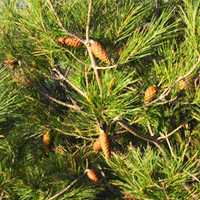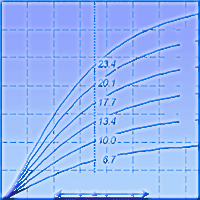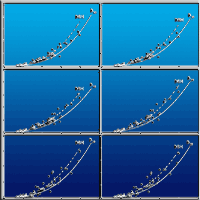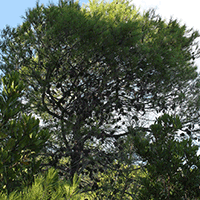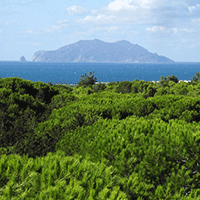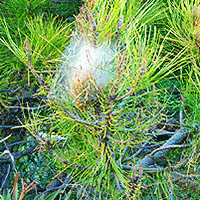
Carbon and nutrient contents in the miscellaneous fraction of litterfall under different thinning intensities in a semiarid Pinus halepensis afforestation
Carmen Segura (1) , Emilia Fernández-Ondoño (1), M Noelia Jiménez (2), Francisco B Navarro (3)
iForest - Biogeosciences and Forestry, Volume 12, Issue 4, Pages 375-382 (2019)
doi: https://doi.org/10.3832/ifor2907-012
Published: Jul 12, 2019 - Copyright © 2019 SISEF
Research Articles
Abstract
Litterfall evaluation and the effects caused by forestry practices provide valuable information on nutrient-cycle dynamics in managed forests. So far, most of the studies have focused on leaf-fall, omitting other litterfall fractions that can be also relevant for forest and soil modelling in a global change context. With this aim the miscellaneous fraction was quantified in a Pinus halepensis afforestation in the semiarid SE of Spain five years after four different thinning regimes were applied (T75: 75% of mean basal area removed; T60: 60%; T48: 48%; and T0: no thinning). Concentrations and pools (kg ha-1) of carbon and nutrients in the miscellanea fraction were monthly analysed for C and N (June 2010-May 2013), and for P, K, Na, Ca, Mg, Fe, Zn, and Mn (June 2011-May 2013). No differences in concentrations of carbon and nutrients were found among treatments with the exception of N, which showed significant differences between T75 and T60 plots. For pools, a high variability was found over time with maximum C and N pools found during spring, likely reflecting the influence of Thaumetopoea pityocampa attacks. Thinning affected C, N, Mn, and Zn pools in 2011-2012 period, and P, K, Ca, Mg, Mn, Fe, and Zn pools in 2012-2013. Significant differences were mainly found between the most intensive treatment (T75) and unthinned plots (T0). The percentage of annual mean C and nutrient pools in miscellanea showed the importance of its monitoring, with pools that represented from 43.0% to 57.9% of the total litterfall for C (278.81-746.01 kg ha-1 yr-1), N (4.18-10.44 kg ha-1 yr-1), and P (0.37-1.43 kg ha-1 yr-1). Our results stress the high relevance of miscellany monitoring in order to gain a better understanding of nutrient cycles in forest ecosystems.
Keywords
Mediterranean Region, Aleppo Pine, Micro- and Macronutrient Concentrations, Nutrient Dynamics, C Inputs, Pine Processionary
Authors’ Info
Authors’ address
Emilia Fernández-Ondoño 0000-0002-3530-9302
Department of Soil Science and Agricultural Chemistry, Faculty of Science, University of Granada, C/Severo Ochoa s/n, 18071 Granada (Spain)
Department of Botany, Faculty of Pharmacy, University of Granada, Campus de Cartuja, 18071 Granada (Spain)
Area of Agriculture and Environment, Institute of Agricultural Research and Training of Andalusia (IFAPA), Government of Andalusia, Camino de Purchil s/n, 18004 Granada (Spain)
Corresponding author
Paper Info
Citation
Segura C, Fernández-Ondoño E, Jiménez MN, Navarro FB (2019). Carbon and nutrient contents in the miscellaneous fraction of litterfall under different thinning intensities in a semiarid Pinus halepensis afforestation. iForest 12: 375-382. - doi: 10.3832/ifor2907-012
Academic Editor
Giorgio Alberti
Paper history
Received: Jun 27, 2018
Accepted: May 02, 2019
First online: Jul 12, 2019
Publication Date: Aug 31, 2019
Publication Time: 2.37 months
Copyright Information
© SISEF - The Italian Society of Silviculture and Forest Ecology 2019
Open Access
This article is distributed under the terms of the Creative Commons Attribution-Non Commercial 4.0 International (https://creativecommons.org/licenses/by-nc/4.0/), which permits unrestricted use, distribution, and reproduction in any medium, provided you give appropriate credit to the original author(s) and the source, provide a link to the Creative Commons license, and indicate if changes were made.
Web Metrics
Breakdown by View Type
Article Usage
Total Article Views: 41499
(from publication date up to now)
Breakdown by View Type
HTML Page Views: 35557
Abstract Page Views: 2708
PDF Downloads: 2442
Citation/Reference Downloads: 3
XML Downloads: 789
Web Metrics
Days since publication: 2352
Overall contacts: 41499
Avg. contacts per week: 123.51
Citation Metrics
Article Citations
Article citations are based on data periodically collected from the Clarivate Web of Science web site
(last update: Mar 2025)
Total number of cites (since 2019): 2
Average cites per year: 0.29
Publication Metrics
by Dimensions ©
Articles citing this article
List of the papers citing this article based on CrossRef Cited-by.
References
Plant litter. Decomposition, humus formation, carbon sequestration (2nd edn). Springer-Verlag, Berlin, Germany, pp. 286.
Gscholar
Short-term effects of prescribed burning on litterfall biomass in mixed stands of Pinus nigra and Pinus pinaster and pure stands of Pinus nigra in the Cuenca Mountains (Central-Eastern Spain). Science of Total Environment 618: 941-951.
CrossRef | Gscholar
World reference base for soil resources. Food and Agriculture Organization for the United Nations, Rome, Italy, pp. 84.
Gscholar
Effects of thinning on litterfall were found after years in a Pinus halepensis afforestation area at tree and stand levels. Forest Ecology and Management 289: 354-362.
CrossRef | Gscholar
Using measured stocks of biomass and litter carbon to constrain modelled estimates of sequestration of soil organic carbon under contrasting mixed-species environmental plantings. Science of the Total Environment 615: 348-359.
CrossRef | Gscholar
Inter- and intra-annual variations in canopy fine litterfall and carbon and nitrogen inputs to the forest floor in two European coniferous forests. Annals of Forest Science 70: 367-379.
CrossRef | Gscholar

